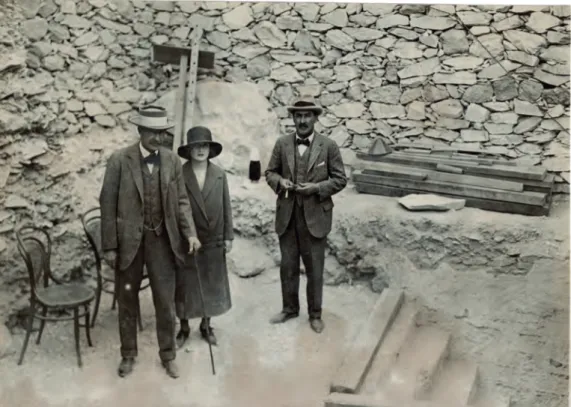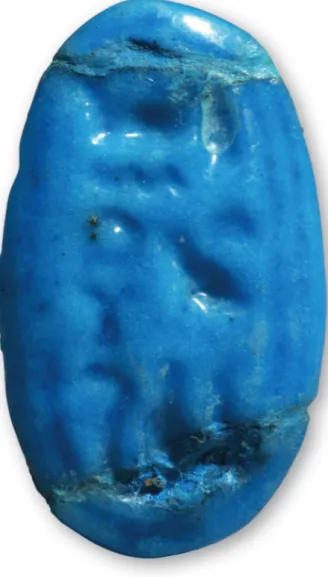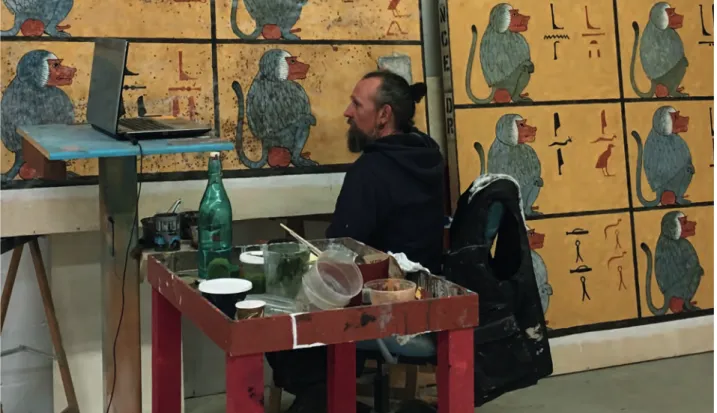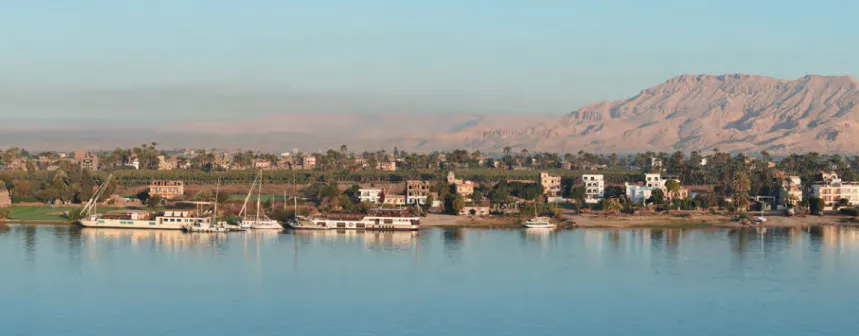Collection Aegyptiaca Leodiensia 12
TUTANKHAMUN
DISCOVERING THE FORGOTTEN PHARAOH
Catalogue edited by
Simon Connor and Dimitri Laboury
Exhibition organized at the Europa Expo space
TGV train station “Les Guillemins”
Liège, 14th December 2019 – 30th August 2020
Presses Universitaires de Liège
2020
The exhibition “Tutankhamun. Discovering the
Forgotten Pharaoh” was produced by the scrl-fs Europa Expo and realised by the non-profit organisation Collections & Patrimoines.
Commissioner: René Schyns
Curators: Dimitri Laboury and Simon Connor Managing Director: Alain Mager
Operational and financial management: Marie Kupper Technical Director: Agostinho da Cunha
Human Resources Department and ticketing: Rosabella
Sanchez
Scientific Committee: Jean-Michel Bruffaerts, Simon
Connor, Alisée Devillers, Pierre Hallot, Dimitri Laboury, Hugues Tavier, Claudia Venier
Conception: Dimitri Laboury, Simon Connor, Alix
Nyssen, Guy Lemaire, René Schyns
Artistic direction: Christian Merland, Sophie Meurisse,
Geneviève Schyns
Direction of the reconstitution of pharaonic sets: Hugues
Tavier
Communication: CARACASCOM.com, Manfred
Dahmen, Lionel Halleux
Attaché of direction: Youri Martin Computer graphics: Michael Van Raek
Texts, legends and audio guides: Eddy Przybylski Shelf Coordinator: Laurent Dillien
Workshop manager: Julien Sevenants
Set designers: Ahmed Hassan, Maurice Lai, Joëlle
Luremonde, David Hermans, Maïti Simon, Daniel Voisin, Philippe Weerts
Lights: Carlo Casuccio, Renaud Lavigne
Carpenters: Stefano Azzalin and Benjamin Bouillot Fitters: Mike Tambour, Pascal Norga, Nicolas Detrooz,
Alain Parmentier.
Ironwork: Pierre Leboulange Sound engineer: Serge Winandy Technicians: e.m.c. Filippo Pultrone
Translation of texts in the exhibition: Vanessa Davies,
Maud Slingenberg; colingua
Audio guides: rsf/trillenium
EUROPA EXPO scrl-fs
President: Karl-Heinz Lambertz
Administrators: Anne Faway-Reul, Marie Kupper,
Laurence Schyns and René Schyns
Managing Director: Alain Mager
COLLECTIONS & PATRIMOINES asbl
President: René Schyns
Administrators: Claude Dedye, Charlotte Ferrara, Michel
Konen, Guy Lemaire, Christian Merland and Jean-Claude Phlypo
Managing Director: Alain Mager
LENDING INSTITUTIONS
Germany
– Hildesheim, Roemer- und Pelizaeus-Museum – Karlsruhe, Badisches Landesmuseum – Baden State
Museum
– Tübingen, Ägyptische Sammlung der Eberhard Karls Universität Tübingen
England
– Cambridge, Fitzwilliam Museum
– Manchester, Manchester Museum – University of Manchester
– Private collectors
Belgium
– Brussels, Royal Museums of Art and History – Brussels, royal palace
– Morlanwez, Musée Royal de Mariemont – Private collectors
Canada
– Toronto, Bata Shoe Museum
Spain
– Private collector
France
– Paris, Musée du Louvre
– Strasbourg, Institut d’Égyptologie de l’Université de Strasbourg
– Private collector
Netherlands
– Leiden, Rijksmuseum van Oudheden
Acknowledgements
Jean-Lou Stefan
The anonymous private collectors who entrusted us with their pieces.
This book is dedicated to the memory of Agostinho da Cunha, untimely seized by the Abductor, as ancient Egyptians called it.
The Exhibition ...15
Tutankhamun. Discovering the Forgotten Pharaoh [Simon CONNOR, Dimitri LABOURY, Alain MAGER and René SCHYNS] ... 16
Behind the Scenes: How to Set up an Exhibition [Alix NYSSEN]... 22
Replicas on Display [Simon CONNOR and Eid MERTAH] ... 24
The Carter Adventure ...31
The Discovery of Tutankhamun’s Tomb [Dimitri LABOURY] ... 32
Carter’s Palette [Hugues TAVIER] ... 38
Tutankhamun’s Tomb: The Exception or the Rule? [Dimitri LABOURY] ... 42
Reconstructing the Tomb: Copying as a Method of Technical and Scientific Learning [Hugues TAVIER] ... 48
Photography and the Media at the Tomb of Tutankhamun [Christina RIGGS] ... 52
Carter’s Papers and the Archaeological Record of Tutankhamun’s Tomb at the Griffith Institute, University of Oxford [Francisco BOSCH-PUSCHE, Elizabeth FLEMMING, Cat WARSI and Anne-Claire SALMAS] ... 62
Buying and Selling Tutankhamun [Tom HARDWICK] ... 68
The Treasure ...73
A True Icon: Tutankhamun’s Gold Mask [Katja BROSCHAT and Christian ECKMANN] ... 74
The Artist Who Created the Most Famous Funerary Mask in the World? [Dimitri LABOURY] ... 76
The Throne of Tutankhamun [Dominique FAROUT] ... 78
Beauty in Detail. Glass from the Tomb of Tutankhamun [Katja BROSCHAT] ... 82
Boxes and Coffrets [Christian LOEBEN] ... 86
Sticks and Staves [André J. VELDMEIJER and Salima IKRAM] ... 90
Brothers-In-Arms. The Two Daggers of the Tomb [Katja BROSCHAT, Eid MERTAH and Christian ECKMANN] ... 94
Weaponry [André J. VELDMEIJER and Salima IKRAM] ... 98
Chariots [André J. VELDMEIJER] ...102
The Gold-Sheet Appliqués of Tutankhamun’s Tomb [Katja BROSCHAT and Christian ECKMANN] ...106
Almost Friends. The Ancient Near East in the Tutankhamun Era [Vera E. ALLEN] ...110
Tutankhamun and the Land of the Bow. Egyptian-Nubian Relations during the Eighteenth Dynasty [Faïza DRICI] ...116
9
The Protagonists ...121
Amenhotep III [Christian BAYER] ...122
Tiye [Christian BAYER]...122
Akhenaten [Dimitri LABOURY] ...124
Nefertiti [Dimitri LABOURY]...124
Meritaten [Dimitri LABOURY] ...125
Ankhesenamun [Dimitri LABOURY]...126
Tutankhamun [Dimitri LABOURY] ...127
Ay [Dimitri LABOURY] ...128
Horemheb [Dimitri LABOURY] ...129
Focus: Plaquette Featuring Akhenaten, Nefertiti and Two of Their Daughters [Dimitri LABOURY] ...131
Amarna or the King’s Childhood ...133
The City of Akhetaten: Amarna [Robert VERGNIEUX] ...134
Focus: A Fragment of Face, Royal Museums of Art and History [Héloïse Depluvrez] ...137
Focus: Head of a Princess, Fitzwilliam Museum [Dimitri LABOURY] ...138
Talatats Blocks [Robert VERGNIEUX] ...140
Focus: A Royal Behind [Tom HARDWICK] ...143
Focus: A Talatat Block Showing a Group of Royal Nurses [W. Raymond JOHNSON] ...144
Statuary from the Great Aten Temple [Harsha HILL] ...146
Focus: A Statue Torso, University of Tübingen [Dimitri LABOURY] ...148
Focus: Fragment of the Face of a Statue of Akhenaten [Dimitri LABOURY] ...150
Focus: Arm Fragment of a Colossal Statue of Nefertiti [Dimitri LABOURY] ...152
Focus: Wrist Fragment of a Royal Statue [Dimitri LABOURY] ...153
The Reproduction of an Amarna Palace Room [Hugues TAVIER] ...154
The Workshop of the Sculptor Thutmose: “In the Studio of an Artist” [Dimitri LABOURY] ...156
The Reconstruction of a Sculptor’s Workshop [Hugues TAVIER] ...161
“The Beautiful One Has Come.” The Creation of Nefertiti’s Perfect Portrait [Dimitri LABOURY] ...162
10 Table of Contents
Living at the Court of Tutankhamun ...171
Life at Pharaoh’s Court [Claudia VENIER] ...172
Focus: Mechanical Toy in the Shape of a Dog, Metropolitan Museum of Art [Dimitri LABOURY] ...176
“Show Me Your Chair, I’ll Tell You Who You Are.” Palace Furniture [Claudia VENIER] ...178
Tutankhamun’s Pottery [Tom HARDWICK] ...186
Focus: Two Mycenaean Greek Pottery ‘Stirrup Jars’, Manchester Museum[Claudia VENIER] ...190
Focus: Two Fragments of Ceramics with Hathoric Figures [Alisée DEVILLERS] ...191
Glass Production in the Amarna Period [Paul NICHOLSON] ...192
The Basketry [André VELDMEIJER and Salima IKRAM] ...196
Focus: Lot of Baskets [Alisée DEVILLERS] ...199
Eating at the Court of Tutankhamun or Feasting with the King. What Did Tutankhamun Eat? [Salima IKRAM] ...200
Tutankhamun’s Wine Cellar [Pierre TALLET] ...204
Tutankhamun’s Linen [Nagm HAMZA] ...208
Tutankhamun’s Gloves [Dominique FAROUT and Amandine MÉRAT] ...214
Sandals and Shoes [André VELDMEIJER] ...218
Looking Good in the Time of Tutankhamun [Guillemette ANDREU-LANOë] ...222
Enchanted Trumpets [Sibylle EMERIT] ...228
Some Musical Peculiarities of the Amarna Era [Sibylle Emerit]...232
Religion and Politics ...237
Aten vs Amun. Religious Politics and Political Religion under Tutankhamun and His Father, Akhenaten [Dimitri LABOURY] ...238
Focus: Two Talatats Representing Nefertiti Praying [Jacquelyn WILLIAMSON]...244
Popular Devotion in Amarna [Alisée DEVILLERS] ...246
Focus: Two Moulds for Amulets Showing Dwarvish Figures [Alisée DEVILLERS]...248
Focus: Mould for an Amulet in the Shape of Taweret [Alisée DEVILLERS] ...249
The Spectrum of Belief. Amulets in the Time of Tutankhamun [Tom HARDWICK] ...250
The Life, Lives, and Death of Images [Simon CONNOR] ...254
11
Death Comes as the End ...269
The King Is Dead! CSI Biban el-Moluk [Angelique CORTHALS] ...270
Suffering from Malaria in the Age of Tutankhamun [Bernard LALANNE] ...273
Mosquitos in Egypt [Stéphane POLIS] ...275
The Chromosomes of Tutankhamun [Marc GABOLDE] ...276
The King’s Funeral [Alisée DEVILLERS] ...282
Tutankhamun’s Tomb, or the First Botanical Reference Collection in Egyptology [Gersande ESCHENBRENNER-DIEMER] ...286
Reconstructing Tutankhamun’s Floral Collars. Some Lessons from an Experiment in Flowers [Jean-Lou Stefan] ...289
The Looting of Tombs in the Valley of the Kings [Susanne BICKEL] ...290
Papyrus Leopold II-(Amherst). An Ancient Investigation into the Plundering of the Theban Necropolis [Stéphane POLIS] ...294
Focus: A Funerary Deity in Gilded Cartonnage [Tom HARDWICK] ...298
Focus: Canopic Vases with the Name of Ipy [Dimitri LABOURY] ...300
Resurrecting Tutankhamun ...303
“King Tut” and the Worldwide Tut-mania [Jean-Marcel HUMBERT]...304
A Queen, an Egyptologist and a Pharaoh [Jean-Michel BRUFFAERTS] ...310
Welcome to Tutankhamun’s! A Belgian Touch of Egyptomania in the Roaring Twenties [Jean-Michel BRUFFAERTS] ...314
Belgians Cursed by Tutankhamun [Jean-Michel BRUFFAERTS] ...318
Tutankhamun and Akhenaten at the Musée du Cinquantenaire [Luc DELVAUX] ...322
Tutankhamun. The Man behind the Mask [Simon CONNOR and Dimitri LABOURY] ...326
Fig. 1: Lord Carnarvon, Lady Evelyn and Howard Carter at the entrance of Tutankhamun’s tomb, at the end of January or beginning of February 1923. Private collection, UK.
16
Simon C
onnor
, Dimitri L
aboury
, Alain M
ager
& René S
ChynS
Tutankhamun. Discovering the
Forgotten Pharaoh
A
t almost one century from the discovery of Tutankhamun’s tomb, Europa Expo chose Howard Carter, the British archaeologist in charge of the discovery, as the narrating voice for the exhibition opening in December 2019. As the centenary nears, the boy-pharaoh is at the peak of his popularity, standing at the centre of several cultural debates. In Egypt, the tomb of Tutankhamun’s queen, Ankhsenamon, is still awaiting discovery. In America and in Europe, various events celebrate the anniversary of the incredible discovery of the pharaoh’s treasure, while in Cairo, the new Grand Egyptian Museum is just about to open its doors to the public and exhibit, for the first time, the pharaoh’s entire funerary equipment.Nowadays, Tutankhamun is probably Egypt’s most glamorous star — and has been such since 1922. This is the reason behind our choice for the title of this exhibition: at the time of Carter, whose voice will accompany the visitor, the boy-pharaoh was nothing but a name in a list of rulers. However, what brought us to set the focus of the exhibition on him was not his name, synonymous with the
golden age of pharaohs. In fact, Tutankhamun presents himself as the ideal means to publicly narrate the extraordinary story of an Egyptologist at the beginning of the 20th century, and follow
the adventure which led to the king’s discovery. A journey into ancient Egypt, consisting of episodes of daily life, religious belief and artistic production. The aim is that of understanding on the one hand, how modern methodologies and research tools can shed light on the past, and on the other, the impact that this discovery had on art, the science of archaeology and the collective view we share of the Nile Valley.
In order to explore these topics, Europa Expo has chosen an instructive, narrative path that will introduce the visitors to the latest discoveries con-cerning the boy-pharaoh, his funerary equipment and the environment where he lived. Moreover, the exhibition includes exciting reconstructions of a few monuments: the cruise ship Queen Elisabeth used for travelling on the river down to Luxor, the funerary chamber of Tutankhamun, a room in the Amarna palace, a sculptor’s atelier adjacent to the court, and even the laboratory where analyses on
Fig. 2: faience ring bearing the name of Tutankhamun. Private collection, UK. Photograph J. James.
17
Simon C
onnor
, Dimitri L
aboury
, Alain M
ager
& René S
ChynS
Tutankhamun. Discovering the
Forgotten Pharaoh
the mummy of the boy-pharaoh were carried out. These interactive spaces are alternated with more traditional museum rooms where the visitor has the chance to admire archaeological objects, watercolors and old pictures borrowed from the collections of the most prestigious museums and collectors in Europe.
This immersive approach is undoubtedly the signa-ture feasigna-ture of Europa Expo, in collaboration with Collections & Patrimoines. The adventure started in 1991, when the exhibition “All Hergé” attracted 250.000 visitors to the venue of Welkenraedt over 100 days, and allowed them to join, by means of a 3D trip, in the incredible adventures of the young reporter Tintin. This experience, which hadn’t been conceived as to comprise any sequels, was imme-diately followed by a meeting with Georges Simenon at his born place, Liège. Thanks to a journey explor-ing his tumultuous adventures, the author let the public in on the story of the commissioner Maigret and his 193 novels, nowadays translated into 47 languages. In 1995, Brussels welcomed “J’avais 20 ans en 45”, possibly one of the milestone exhibi-tions in Belgium, which counted 750.000 visitors over 10 months and showcased the events of the Second World War, covering all aspects of human nature. Brussels was chosen once more as the venue for two other events: “Made in Belgium”, a kaleido-scopic view of the economic, social, cultural, artistic, sportive and more generic Belgian ‘know-how’; and “Leonardo Da Vinci, the European Genius”, set in the breathtaking frame of the Basilica of Koekelberg.
In 2010, Europa Expo moved to the new TGV station of Liège-Guillemins, designed by the Spanish architect Santiago Calatrava, where it presented the exhibition “SOS Planet”, dealing with a series of considerations on mobility and sustainable develop-ment. Never would we have imagined that the same space of 6.000 m² rented by SNCB on this occasion,
would have served as a venue for another exhibi-tion. Surprisingly, “Golden Sixties” attracted almost 300.000 visitors, about 90.000 of whom arrived by train thanks to “B-Excursions”.
Fig. 3: creation of reproductions of the walls of Tutankhamun’s burial chamber. Photograph S. Connor.
18 Tutankhamun. Discovering the Forgotten Pharaoh
The exhibitions hosted at the Guillemins station became commercial vectors for the SNCB, allowing this project to continue with “Liège 14– 18”, “De Salvador à Dali”, “L’armée Terracotta, l’héritage de l’Empereur chinois éternel”, “J’aurai 20 ans en 2030”, celebrating the bicentenary of Liège University, in addition to “Génération 80 Expérience”, which has just come to an end. Over one and a half million visitors have trodden the spans of the Liège-Guillemins station since 2010, and overall the exhibitions have welcomed over three and a half million visitors so far.
Europa Expo follows its aim of promoting the Belgian and international heritage, by means of exhibitions focused not only on the enhancement of artists, inventors, scientists, and key figures of inter-national prominence, but also on social themes or emblematic periods that left a mark on the history of our society. Thanks to its experience and track record, Europa Expo presents itself as a landmark in terms of important exhibitions and cultural events at an international level.
The space made available for the exhibition devoted to Tutankhamun is vast: it extends for ca. 2,000 m2,
allowing visitors to wander around large-scale reconstructions of different kinds of environments.
From the start, it was decided to place the archaeological pieces side by side with modern replicas, the latter clearly distinguished from the former thanks to the condition of their display. By including these replicas, which are either plaster casts from museums in Berlin and Bruxelles, or furniture and objects created by artisans in Cairo and Liège, a double purpose may be pursued. First of all, that of displaying those pieces that are difficult or even impossible to borrow, and of placing them in an evocative environment: thanks to the replicas, the visitor is able, for instance, to experience the moment when Carter and Carnarvon entered the king’s tomb for the first time. It was only with the help of replicas that it was possible to recreate the atmosphere of this discovery, given that the royal objects, now preserved in Cairo, are currently exhibited in showcases and will never be piled up in a funerary chamber again.
Accueil bateau 1891–1892 Amarna av. Petrie Stèles-frontières d’Amarna 08.01.1905 Sérapéum Carter aquarelliste 1907 rencontre av. Carnarvon (1915) La quête de la tombe de Toutankhamon 1922 découverte de la tombe Fouille de la tombe Foci thématiques Les protagonistes antiques La vie de palais à Amarna Le site d’Amarna et sa ville Les particuliers : l’atelier du sculpteur Thoutmose Néfertiti – La beauté Amon vs Aton Mort et inhumation du roi La Tout-mania – La reine Élisabeth & Jean Capart Les visages du roi & la paléo-génétique Final & conclusion Photos de la découverte
Fig. 4: plan of the exhibition.
19
Secondly, these modern artefacts allow for the exploration of several topics, and speak for those museum pieces displayed in showcases. In this way, the replicas contribute to developing some of the themes dealt with in the exhibition.
The creation of life-size sets provided the opportunity to undertake experimental research and reproduce in the ancient Egyptian fashion and through the employment of similar pigments and supports, those paintings covering the walls of tombs and palaces, in order to understand the timing and knowledge necessary for their creation. Thanks to these re-enactments, the visitor is able for the first time to see with his/her own eyes a room in the likeness of that where Tutankhamun dwelt in his palace, or the workshop where a sculptor left behind his models and rough sketches made out of plaster. Hence, certain objects are deconsecrated in order to understand their function, while the original, ancient pieces are displayed individually in traditional showcases, provided with specific illumination to highlight their beauty.
We wish to express our gratitude to those institu-tions that kindly participated in the fulfilment of this project: the Musée du Louvre, the British Museum, the Musée Royal de Mariemont, the Rijksmuseum van Oudheden, the Badisches Landesmuseum, the Roemer- und Pelizaeus-Museum, the Manchester
Museum, the Fitzwilliam Museum, the Museum der Universität Tübingen, the Musée de l’Université de Strasbourg, together with the private collectors, who, despite their desire to remain anonymous, receive our sincere thanks.
As a result of their generous loans, it was possi-ble to include many exceptional objects in the exhi-bition. Some of these are already known to the public, while others are yet to be exhibited for the first time: statues and reliefs bearing witness to the late Eighteenth Dynasty artistic period, daily life objects, furniture and baskets, amulets and funerary decor, prints of the original photographs taken by Burton at the time of the tomb’s discovery, and even original watercolors painted by Howard Carter at the onset of his career.
The itinerary of the exhibition develops around fif-teen apses. A selection of photographs concerning the discovery of Tutankhamun’s tomb first wel-comes the visitor, before leading him to the deck of a cruise ship travelling upstream on the Nile until Luxor. We are at the beginning of the 20th century
and Carter, whose narrating voice guides us through the whole tour, starts by recounting the early years of his career and those events that led him to look for Tutankhamun’s tomb in the Valley of the Kings. Four rooms are devoted to the preliminary part of the discovery, following Carter around his first
Fig. 5: panorama of the western bank in Thebes (Luxor). Photograph M. Kacicnik.
20 Tutankhamun. Discovering the Forgotten Pharaoh
occupations in Amarna, Saqqara and Thebes. The next section of the exhibition draws the spectator inside the archaeological discovery of the century: together with Carter, he will be able to experience again the moments of the excavation and the opening of the tombs and coffins. The focus will thus be on several reproductions of pieces from the treasure, in order to tackle various themes concerning the pharaonic ideology, and to explain the reason behind their presence within the funerary equipment.
In the following section of the exhibition, Carter will take us even further back in time, 3200 years before the discovery, to gain an understanding of Tutankhamun’s persona, and of the surrounding environment. The visitor will thus learn about the family members of the boy-pharaoh, such as Amenhotep III, Tiye, Akhenaten and Nefertiti. The interactive spaces will project the public into a — furnished! — room of the Amarna Palace, and through the workshop of a court sculptor. Special attention is devolved not only to the artistic sphere of this period, but also to the building up of the idea of “portrait” and of a beauty canon. Religion and politics had been at the core of the revolution
involving the palace, leaving a mark on the boy-pharaoh: the following room centres upon rivalries and the traditional pantheon, with Amun at the head, and finally Aten, the solar disc.
The king suddenly dies, and is thus buried; his tomb is robbed, and he falls into oblivion. Two rooms retrace these events, before taking the visitor back to the present day and to the studies that were carried out on the mummy of the young pharaoh, in the quest for the reconstruction of the (illusory) face of the king, and looking into the DNA analysis that places the pharaoh at the heart of the scientific de-bate. Who were the parents of this young king? What was the cause of his death, and what did he look like? These queries may sound anecdotic, nevertheless we long for them. The fascination that has been at-tracting the public who fell in love with an idealized Tutankhamun for almost a century, is the result of a proper “Tut-mania”. This mania, which developed from the 1920s up until now, represents the theme tackled in the last two rooms of the exhibition. The volume accompanying this exhibition is not to be conceived as an exhaustive catalogue of the displayed pieces. On the contrary, this book can be
21
thought of as a companion to the visit, encouraging the public to go into more depth on those themes the exhibition dealt with. Many specialists, Egyptol-ogists, archaeolEgyptol-ogists, conservators and historians have given their contribution, by enouncing their own point of view on the archaeological world in Egypt at the beginning of the 20th century, on the
works carried out at the tomb by Carter and his team, on the funerary equipment discovered in situ, and on the cultural, political and religious environment that Tutankhamun lived in; not to mention the excitement surrounding the event which led to this forgotten pharaoh going from zero to hero, gifting him with one of the most evocative names in history.
Bearing in mind that this volume does not aspire to becoming the new “All-about-Tutankhamun” book — several are the volumes written over recent years on the royal child, and many other publications are upcoming as 2022 gets closer — its aim is that of providing a take on a series of matters, and challenging a number of topics. The authors were asked to answer the following question: “What do we really know, and how do we know it?”. Hence, a number of matters still open for debate will be taken into consideration. Did Carter and Carnarvon enter
the funerary chamber before its official opening? Was Tutankhamun cursed with a clubfoot? Did he die of malaria? Was Nefertiti his mother? Was his tomb intended for him?
The intention of the authors is far from provid-ing an answer to all these questions. The book’s aim is rather that of collecting elements that could tip the scale in favour of one or the other interpreta-tion. In many cases, the answers may let us down: we may often have an inkling, and we will, however, be forced to leave room for doubts. Such is the nature of research, accepting that we do not have the complete picture, and we may never have it.
Moreover, other essays reveal the results of recent investigations into the funerary furniture discovered by Carter. We have chosen a series of drawings and photographs to visually accompany this catalogue in such a way that the exhibited items may speak for themselves, and develop their inherent topics. It is our wish that this volume may accompany the visitor through his/her travel, and that it may be appreciated, besides being a beautiful object, as another witness to the Tut-mania: that of the pleasure of organizing a new exhibition on Tutankhamun.




